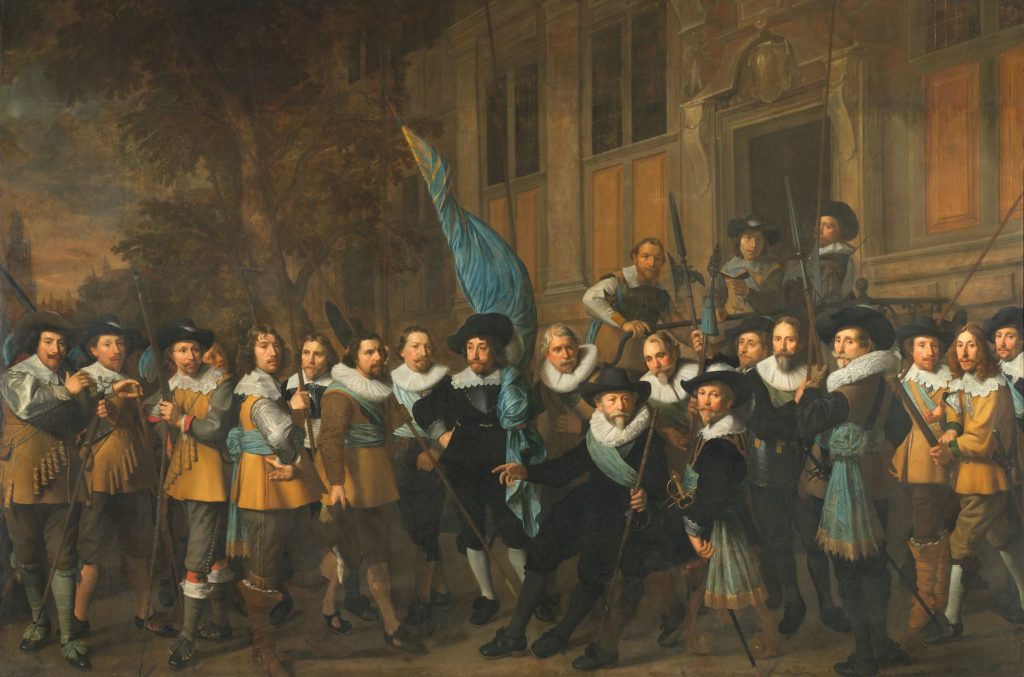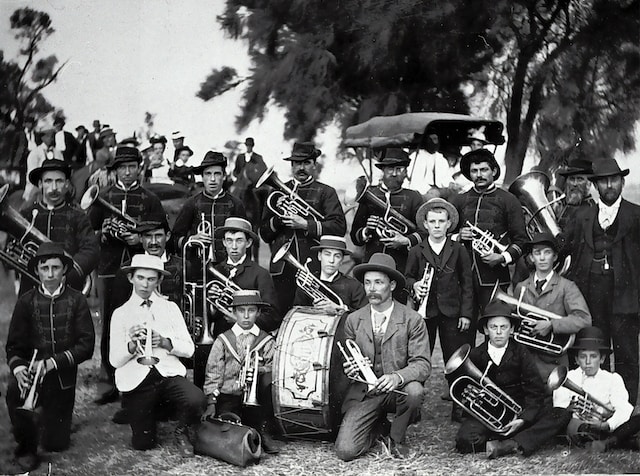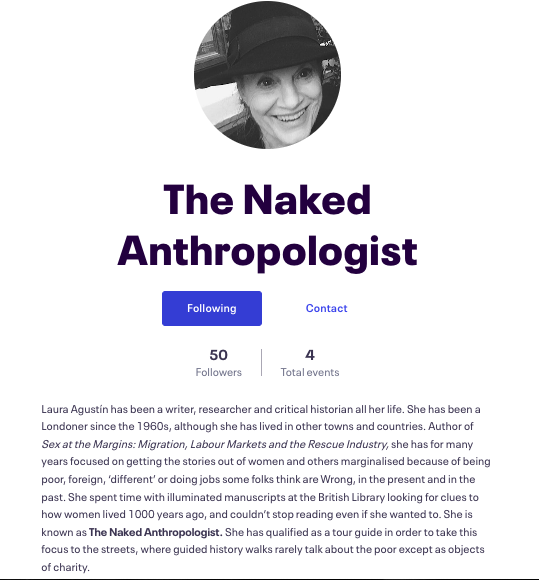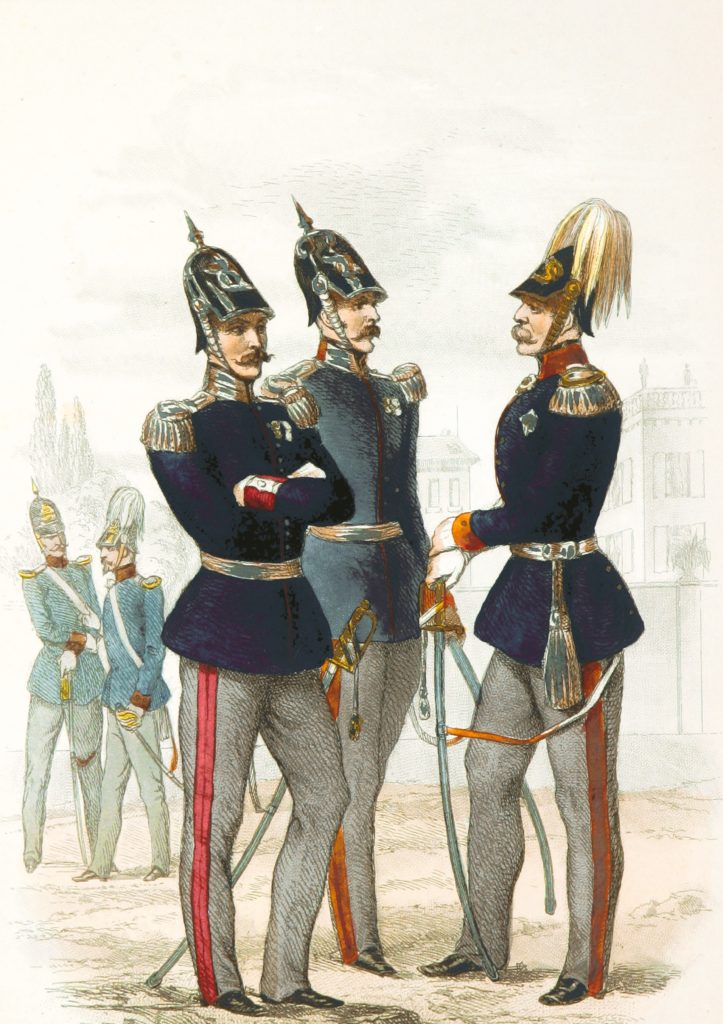 Why do most historical accounts fail to mention women? And not only women but just about every ordinary non-famous non-rich person that ever was, even in accounts of poverty and want? Why do historians make men 100% of the protagonists in all events? Remember the example of the 11th-century Bayeux Tapestry: 70 metres long depicting 626 human figures, 190 horses, 35 dogs and 3 women. Does anyone believe women weren’t there, in any of the scenes, on either side of the Channel, doing anything significant for a long period culminating in the Battle of Hastings? The idea is ridiculous. But as the pictures accompanying this post show, men are usually the only ones portrayed.
Why do most historical accounts fail to mention women? And not only women but just about every ordinary non-famous non-rich person that ever was, even in accounts of poverty and want? Why do historians make men 100% of the protagonists in all events? Remember the example of the 11th-century Bayeux Tapestry: 70 metres long depicting 626 human figures, 190 horses, 35 dogs and 3 women. Does anyone believe women weren’t there, in any of the scenes, on either side of the Channel, doing anything significant for a long period culminating in the Battle of Hastings? The idea is ridiculous. But as the pictures accompanying this post show, men are usually the only ones portrayed.
This post launches my new business, which I had first thought of calling the Little Shop of Women’s Walks. Twenty years ago I think that name would have been fine, but nowadays the word – the very category – women is fraught with conflict. As far as I’m concerned, anyone who identifies as a woman can be one; I’m not making a category with boundaries. And I’m not only interested in females of the species. I could say women and other marginalised people, but do I have to? My interest is to uncover and create histories of those usually left out of historical accounts, and that often means everyone who isn’t an educated man. Oh sure, a few heroic or social-reforming women and people of colour get talked about, but in many cases it’s because they were literate and could nearly pass as middle-class.
 When considering telling a history, whose point of view do you take? In most histories the author presumes to have an objective meta-overview of events and to know what’s important and what’s trivial. In these accounts women are usually subordinates or walk-on characters and the poor and working-class hardly appear unless they are the objects of bourgeois charity. When Antonio Gramsci referred to the subaltern and Southeast Asian scholars built a field of studies on it, they put at the centre people rarely given their due in histories.
When considering telling a history, whose point of view do you take? In most histories the author presumes to have an objective meta-overview of events and to know what’s important and what’s trivial. In these accounts women are usually subordinates or walk-on characters and the poor and working-class hardly appear unless they are the objects of bourgeois charity. When Antonio Gramsci referred to the subaltern and Southeast Asian scholars built a field of studies on it, they put at the centre people rarely given their due in histories.
So: far from being original I’m building on everyone who’s griped about the omissions for a long time. It’s what I did in the research for Sex at the Margins, when I asked why a lot of feminist and middle-class activists and commentators were so upset about ‘prostitution’ when so many people prefer selling sex to their other options for making money. For so many women primarily but also for so many queers, gays, neurodivergent, disabled and a list of other identities and physical traits. Now I want to take this view to the streets, on guided walks anyone can sign up for, in versions of history where the Usual Suspects aren’t the main characters.
 Of course some tours do take women as their subjects, most often middle-class reformers or philanthropists, nurses and doctors, creative artists and authors. The mistresses of important men are mentioned, as well as queens and aristocrats. All I want to do is focus on everyone not in those groups!
Of course some tours do take women as their subjects, most often middle-class reformers or philanthropists, nurses and doctors, creative artists and authors. The mistresses of important men are mentioned, as well as queens and aristocrats. All I want to do is focus on everyone not in those groups!
To sum up, I’m describing my business as London Walks with Gender, Sex and Class. Social class is even probably the most obvious thing I want to focus on: lives of working folks, hoi polloi, proletarians. The assumption that everyone wants to become Middle Class or higher permeates culture, its being understood that achieving that status requires not only having more money but also embracing the values and etiquette.
I’m closing in on 78 years old, which nowadays doesn’t even mean much, in the sense one is not necessarily ill or lame. I’ve liked computers from the beginning and don’t mind learning new routines and mastering the details, but I don’t want to spend all my time in front of screens. A lot of that is required to plan and research a walking tour, but afterwards I get to spend time in the streets, in all weathers, with live people: talking about things that matter to me, answering questions and objection,s and if I can manage it ending in a pub.
 I’ve put four walks up for sale in my Eventbrite account. The first I described in Scratching Out A Living, about 14th-century working women in Southwark, and two more treat the very poor in 18th-century Seven Dials and working people ranged around the Knightsbridge Barracks in the 19th century. Then there’s a walk in Primrose Hill that rather than focusing on famous ‘celebrities’ that have lived there looks at how the area came to be because of the coming of the railway, whose workers lived there first. I’ll be repeating these walks on future dates, so if something looks interesting but the date doesn’t work, there will be other chances.
I’ve put four walks up for sale in my Eventbrite account. The first I described in Scratching Out A Living, about 14th-century working women in Southwark, and two more treat the very poor in 18th-century Seven Dials and working people ranged around the Knightsbridge Barracks in the 19th century. Then there’s a walk in Primrose Hill that rather than focusing on famous ‘celebrities’ that have lived there looks at how the area came to be because of the coming of the railway, whose workers lived there first. I’ll be repeating these walks on future dates, so if something looks interesting but the date doesn’t work, there will be other chances.
follow me on Eventbrite to receive alerts about new dates for walks.
I’ve officially qualified, having done a very long course with Camden Tour Guides Association (Camden is a central London borough), so I’m covered by public liability insurance to guide anywhere in the UK, and am also guiding in Essex with Rob Smith.
I’ve also begun to offer private tours on a platform called ToursByLocals. There you can get a walking tour for just you and a friend designed for you by me. So if you like the sound of one of the walks you see but want to change it, you can ask by pressing the message-button. These custom-created tours often involve doing original research, and if you want to know the quality of my research look at the Publications tag on the top menu on this page: many of the items there could only have been written by doing careful  research, and I don’t mean googling a topic and looking at random webpages. Reading books can be a long slog, but it’s how you do historical research, preferably in primary sources, to avoid perpetuating myths found in erroneous accounts of events. You read to understand the broader context for the specific event that interests you.
research, and I don’t mean googling a topic and looking at random webpages. Reading books can be a long slog, but it’s how you do historical research, preferably in primary sources, to avoid perpetuating myths found in erroneous accounts of events. You read to understand the broader context for the specific event that interests you.
Or you can write to me on the contact form on the right-hand side of this page and ask for what you want, custom-made for you, outside the ToursByLocals platform. If you’ve researched someone non-famous who lived in London or nearby (perhaps during Ancestry searches) and would like to be shown the area, I’ll do the research to create a tour about that person in the relevant epoch in that place. There only needs to be a tube or rail station fairly near the destination, or a bus or even a taxi that can be called for a last remote stretch. I’m not a driver-guide or a black cabbie: my walks are about the joy of walking.
Follow this blog: Encourage me if nothing else. It’s no longer easy to distribute via social media without paying, and I’m not convinced, if I were to pay, that the famous algorithms would send the post to a rather subtle target-audience. The place to enter your email address is at the top of the right-hand column on this page.
And follow me on Eventbrite.
You get my point about the pictures: They all came up quickly in a simple random search of the word history on a site offering images in the public domain.
—Laura Agustín, the Naked Anthropologist

The omission of women from the historical record applies also to the archeological record. See The Invisible Sex, by Page, Soffer, and Oldavasio, who turn prehistory around and note how the surviving artifacts of stone–spear heads and so on, denoting male hunting expeditions–exclude any materials which might have eroded away over the millenia, and could have been made by women.
Yes certainly the predisposition to see only men is found in research in all fields. The hard objects could have been made by anyone, as you say. And there is nothing to say women never hunted, using the spears and arrows. Just last month there was yet another supposedly surprising discovery of women as hunters of big game, put forth by anthropologists. The whole dichotomy Hunters v Gatherers isn’t justified. But to me more importantly, all activities that didn’t leave objects like stone, which doesn’t deteriorate, are invisible to us. Bits of woven fibre sometimes survive but most organic matter has evaporated. There are few remnants of that cooking-cleaning-caring labour except pot fragments, and no way to know who did what task.